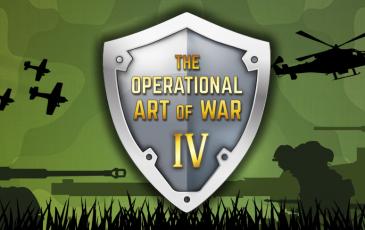Campaign for North Africa 42-43 (PBEM)v.2 - Century of Warfare, TOAW III, and TOAW IV

| Rating: | 8.3 (4) |
| Games Played: | 4 |
| SM: | 6 |
| Turns: | 66 |
| Type: | Custom |
| First Side: | Axis |
| Second Side: | Commonwealth |
| Downloads: | 334 |
Scenario Information:C:\Matrix Games\The Operational Art of War III\Scenarios\WW II - Mediterranean\Campaign For North Africa 42-43.SCE
This scenario is valid.
Scenario Header:
Scenario Title: Campaign For North Africa 42-43 v.2.0
Scenario Version Level: 110
Scenario Briefing:
"THE DESERT WAR"
The Campaign for North Africa
Starting Date #5: Gazala
Version 2
Designer: Bob Cross
TOAW3 ver. 3.2.29.x.
:: Both sides PO programmed ::
Date: May 1942 to January 1943
Location: North Africa
(Latitude: 28.6N to 35.3N)
(Longitude: 17.5E to 31.7E)
Map scale: 5km per hex
Time scale: half-week turns
Unit scale: Battalion
Length: 66 turns
UNIT COLORS
AXIS
German-Tan on Dk. Gray
Luftwaffe-White on Dk. Gray
Italian-Lt. Tan on Gray
It. Blackshirts-Black on Gray
Regis Aeronautica-Cream on Gray
COMMONWEALTH
British-Dk. Blue on Brown
New Zealand-Blue on Brown
Australian-White on Brown
South African-Black on Brown
Indian-Green on Brown
RAF-Lt. Blue on Brown
RAAF-Cream on Brown
SAAF-Brown on Brown
RCAF-Cyan on Brown
Free French-Blue on Tan
Polish-Red on Tan
Greek-Lt. Blue on Tan
Czech-Cream on Tan
USAF-Green on Tan
FFAF-Dk. Blue on Tan
Greek AF-White on Tan
RN-White on Dk. Blue
**********
The Campaign for North Africa depicted in this scenario can be divided into six phases.
"The First Round"
June 1940 - February 1941
This period included Graziani's poorly supplied offensive into Egypt in September. The Italians halted after advancing less than 60 miles to Sidi Barrani. In November, O'Connor launched his "five-day raid". It turned into a complete rout of the Italians. The Commonwealth advanced over 400 miles in 61 days, and destroyed ten Italian divisions. But the Axis invasion of Greece caused Churchill to strip O'Connor of much of his force for the support of the Greeks and his offensive stalled.
"Rommel's First Offensive"
March - October 1941
The arrival of the Germans under Rommel allowed the Axis to take advantage of the Commonwealth weakness. His offensive blitzed all the way to the Egyptian border, and included capturing O'Connor. But Tobruk held out. While Rommel laid siege to Tobruk the Commonwealth launched the unsuccessful "Battleaxe" offensive in June.
"The Winter Campaign"
November 1941 - June 1942
(Note: This is where this scenario starts.)
In November, the Commonwealth launched the successful "Crusader" offensive, which pushed Rommel back to El Agheila. But in December, the Japanese entered the war. Again, the Commonwealth forces were shipped off to other points. And again, Rommel took advantage. He quickly swept back to a line anchored at Gazala.
"Rommel's Second Offensive"
June - July 1942
The Battle of Gazala, in June, forced the Commonwealth forces to fall back into Egypt, leaving a garrison at Tobruk, as before. But this time, the garrison fell, with 35,000 prisoners. Rommel pressed on, and the first battle of El Alamein was fought in July. Rommel was stopped at Ruweisat ridge.
"The Alamein Line"
August - November 1942
At this point, the Commonwealth commander was replaced with Montgomery. Rommel's last-chance offensive began in August. He was stopped at Alam Halfa ridge. The second battle of El Alamein began in October. Montgomery's 1917-style tactics broke the depleted Axis defense. In addition, "Operation Torch" deposited a huge Allied army in Morocco and Algeria on November 8th. Rommel had to retreat.
"The Great Retreat"
November - December 1942
Rommel made a brief stand at Fuka, but had to fall back to Tunisia no matter what. By the first week of January, 1943, the Axis forces were completely off the map of this scenario, into Tripolitania.
SIGNIFICANT EVENTS
The "Desert Fox" rule: Due to Rommel, the Axis recon level starts at 35%. On turn 15 it drops to 15% due to the loss of the 661st Radio Intercept Co. It also includes a 4% Commonwealth shock penalty that lasts until Auchinleck takes over (turn 9), and a 4% Axis shock bonus that lasts until Monty arrives (turn 25). The Commonwealth recon level starts at 0%, rises to 5% when Auchinleck replaces Ritchie, and finally rises to 15% when he is replaced by Monty.
Tthere is a "Raid on Tobruk" on September 13-14, 1942 (turn 33). It has a 5% chance of success and a 10% risk to the LRDG b unit if the raid fails. If successful, Axis supplies are temporarily disrupted.
The Axis forces receive air bonuses on turns 1-6.
Axis forces receive a permanent 25 VP bonus for capture of Tobruk and 50 VP bonus for capture of Alexandria.
Due to "Torch", the Axis receive no replacements on the final fourteen turns. This penalty is canceled if the Axis capture Alexandria.
Capture of Alexandria also cancels the Axis air-cap withdrawal, withdraws all Commonwealth sea-cap, withdraws half of Commonwealth rail-cap, and increases Axis supply stockpiles by 40.
Commonwealth recapture of Alexandria will then reduce Axis supply by 40. This can cycle repeatedly if Alexandria repeatedly changes hands.
If the Axis forces capture El Alamein, the fleet is placed in garrison mode, Cairo and Alexandria are clogged with refugees, and the Commonwealth sea-cap is halved. Note that the garrison mode represents the fleet withdrawing beyond the Suez Canal. But unlike actually withdrawing the fleet, the garrison mode can be reversed, if El Alamein is retaken.
Commonwealth recapture of El Alamein will restore the fleet to active mode. This can be cycled repeatedly if El Alamein changes hands repeatedly. But if Alexandria falls, the fleet is permanently withdrawn, never to return.
In addition, there are 46 Commonwealth land units withdrawn over the course of the campaign.
Axis supply level varies from 24 to 100, depending upon their historical naval convoy level. Also, after June, 1942, Malta begins to have an increasingly detrimental effect on this level. Commonwealth supply increases from 52 to 78. Axis air cap rises to 2400, but is withdrawn on turn 53. Commonwealth air-cap rises to 3600. Commonwealth sea-cap starts at 500 and its rail-cap is 390. Axis capture of Tobruk permanently drops Commonwealth sea-cap to 175. Axis sea-cap is 0 (rising to 27 after capture of Alexandria) and its rail-cap is 0.
The Commonwealth supply point in Bir Hacheim will be removed upon Axis capture of that hex.
Restriction Zone 1 represents the Commonwealth minefields around their southern flank. It is removed upon Axis capture and retention of all three hexes of the 150th Infantry Brigade's fortified box - hexes [112,77], [112,78], and [113,78]
PLAYER'S NOTES
Players should note that the 8th Armored Division arrives in reserve status, and is released eight weeks later. This represents time spent training. As a result of this training, that formation has a higher proficiency than it would otherwise have had, but its availability for operations is delayed.
Note also that all units of the 32nd Army Tank Brigade, the 2nd South African division, and seven other Commonwealth brigades have been designated ineligible for reconstitution. Finally, all Base Support units (both sides) are ineligible for reconstitution.
Both sides have supply points in Benghazi, Derna, Tobruk, and Alexandria. The Axis have a supply point in El Aghelia and the Commonwealth have one in Mersa Matruh.
Both sides have the maximum supply radius of 25. Each gets to augment this with their supply units. The Commonwealth start with three and get one more on turn 25. The Axis start with two, and get one more upon capturing Tobruk.
Also, the Commonwealth player should use his RR units to repair the rail line from Mersa Matruh to Tobruk.
Late in the campaign, the Axis receives two paratroop formations. Similarly, the Commonwealth has amphibious capability East of Derna. Both sides should secure their rear areas accordingly.
If the Axis captures El Alamein, the Commonwealth fleet will be placed in garrison mode. But since this represents the fleet having been withdrawn beyond the Suez Canal, the Axis player should, in fairness, refrain from attacking fleet units until such time as they are released by Commonwealth recapture of El Alamein. But this is only if the Commonwealth player has moved them out of support range before they assume garrison mode, which the Commonwealth player is advised to do if he loses El Alamein.
New house rule: Supply Units must stay on improved road hexes (the black ones) at all times.
DESIGNER'S NOTES:
Hex conversion issues required me to greatly increase the recon level of most units via the use of recon squads and light scout cars. This is a necessary kluge of the TOAW system. In this version, this is facilitated with an equipment edit. The game MUST be played using that edited equipment file.
The Attrition Divider is 4. MRPB is 3.
The Amiriya airbase complex has now been added. However, most of the extra airbases are blocked by restriction zone 2 until turn 20 (August 1, 1942). But if the Axis captures El Alamein, the zone will be removed then.
PRIMARY REFERENCES:
1. "The Campaign for North Africa" (wargame), Richard Berg, Redmond A. Simonsen, Martin Goldberger, et al., Simulations Publications, Inc., 1978.
2. "New Millennium World Atlas Deluxe" on CDROM, Rand McNally 1998.
Special thanks go to playtesters Major Chet Pool, his son Lt. Col. Jim Pool, and Jeremy MacDonald.
Scenario Outcome Text: 0
Victory briefing: Axis
| Gaming Records | |||||||||
|---|---|---|---|---|---|---|---|---|---|
| 1st Side Player | 2nd Side Player | Result | Score | ||||||
 |
Chris | vs. | fastphil |  |
Axis Overwhelming Victory | 66 | 12 | ||
 |
Chris | vs. | Phyrrus116th |  |
Commonwealth Overwhelming Victory | 66 | 12 | ||
 |
burroughs | vs. | Pellejoens |  |
Commonwealth Overwhelming Loss | 12 | 66 | ||
 |
Currahee | vs. | Starfighter |  |
Commonwealth Overwhelming Victory | 66 | 12 | ||






















